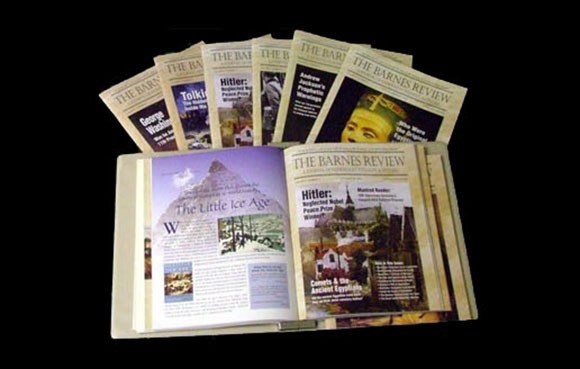Special Expanded 28th Anniversary Edition!
Ancient Mysteries

WHY ANCIENT HISTORY IS SO IMPORTANT
“Oh no,” some people say. “Ancient history is so boring. It’s for stuffy academics who like digging in the dirt and looking at rocks and bones.” True, real archeologists do like to dig in the dirt, much as many of us did when we were kids. And, no doubt, analyzing rocks and bones is an integral part of the daily activity of any scholar specializing in ancient history. But I love it, and I hope you do, too, because there is more to discover under thousands of years of accumulated soil and debris than one could possibly imagine.
Think about the excitement Heinrich Schliemann experienced when he uncovered the remains of the city of Troy—long thought to be just a figment of the imaginations of the saga writers of ancient Greece—or the elation Egyptologists feel when they pop open the tomb of a long-lost pharoah filled with wonders unseen for thousands of years. The fact is, you know almost everything there is to know about the Revolutionary War, America’s War Between the States and World Wars I and II. The last real discoveries are still buried under the sands of time, and, once excavated, will offer insights into the human race that will boggle the mind.
For instance, when I was in school, I was taught that civilization began in Egypt and Mesopotamia in approximately 3,500 B.C. “Civilized” humans needed towns, governance and civil service. Soon, however, archeologists pushed that founding of civilization back to 4,700 B.C. with the city of Harappa in the Indus Valley. That was it. It was decided. This was the oldest civilization until, of course, excavations at Catal Huyuk in Anatolia showed a Neolithic settlement whose top layers dated back to 5,600 B.C. and the deepest layers of the 18 discovered reached 7,000 B.C.
The people of Catal Huyuk, though they had not mastered the smelting of metals or real city planning, were, according to archeologists, “scrupulously clean, painting murals on the walls of their mud-brick and plaster homes” that depicted local animals, landscapes and geometric patterns. They also crafted wonderful figurines of goddesses and patriarchs, carving them from alabaster, basalt and marble. True, they did not have writing or kiln-fired pottery, but they were fully human with the same dreams, desires and intelligence of people today. But, again, scholars insisted there could not possibly be any civilized humans to be found that were older than this.
They were proven wrong again with the discovery of the Gobekli Tepe temple complex in what is today Turkey, just north of the Syrian border. Here, Klaus Schmidt, after a tip from a local herdsman, uncovered a sprawling, sophisticated religious complex with 10- foot tall, finely carved T-shaped megalithic pillars, carefully arranged to astronomical points and decorated with images of gazelles, snakes, foxes and lions that may personify heavenly bodies including constellations and even comets. Gobekli Tepe was built some time around 10,000 B.C. and showed not only a communal effort thought impossible for Neolithic hunter-gatherers, but also demonstrated a knowledge of the cosmos previously unimagined.
And that is just the beginning. Barely 10% of the site has been uncovered. Certainly, that’s it—right? How could advanced humans go back any further than that? Any other older cultures would assuredly be little more innovatory than our “brutish” cave-dwelling ancestors who were merely knuckle draggers, Court Historians insisted. But wait— don’t underestimate them, either. Our European relatives—so-called cavemen—were much more sophisticated than ever thought before. Their cave paintings, hidden deep in subterranean passageways far away from any light source, are gorgeous works of religious art that surpass anything you’ll see in the National Gallery of Art from Jackson Pollack or Mark Rothko. Not only that, Cro-Magnon man possessed an amazingly sophisticated tool kit that included weapons and implements that could pierce the hide of a wooly rhino, ward off a short-faced bear, catch fish as efficiently as today’s metal hooks and plastic lures, and bone needles so well crafted they could be used to repair the waterproof clothes they wore.
Suffice it to say, we modern humans would not make it 20 minutes in Ice Age America or Europe. We’d either freeze to death, have to beg for food or end up on the menu of a dire wolf. So what is left to discover? That is the intriguing thing about ancient history. We don’t know what is left. New discoveries that will rewrite the history of man are still out there, just waiting for someone who likes to dig in the dirt and look at dried-up old bones. What more might be hidden under the sands of Egypt or covered by 100 feet of water along the continental shelves? Each one of these finds will tell us more about ourselves and offer insights on how unsophisticated we moderns actually are today compared to these ancient peoples.
—PAUL ANGEL, Executive Editor
Softcover, 140 pages, $15 plus $5 S&H inside the U.S. Order this issue by clicking here.
Remember: 10% off retail price for TBR subscribers. Use coupon code TBRSub10 if you are an active subscriber to claim your discount on books and other great products, excluding subscriptions.
Order online from the TBR Store using the links above or call 202-547-5586 or toll free 877-773-9077 Mon.-Thu. 9-5 ET with questions or to order by phone.
Know someone who might be interested in our books?
Forward this email to your friend by clicking here.
|


